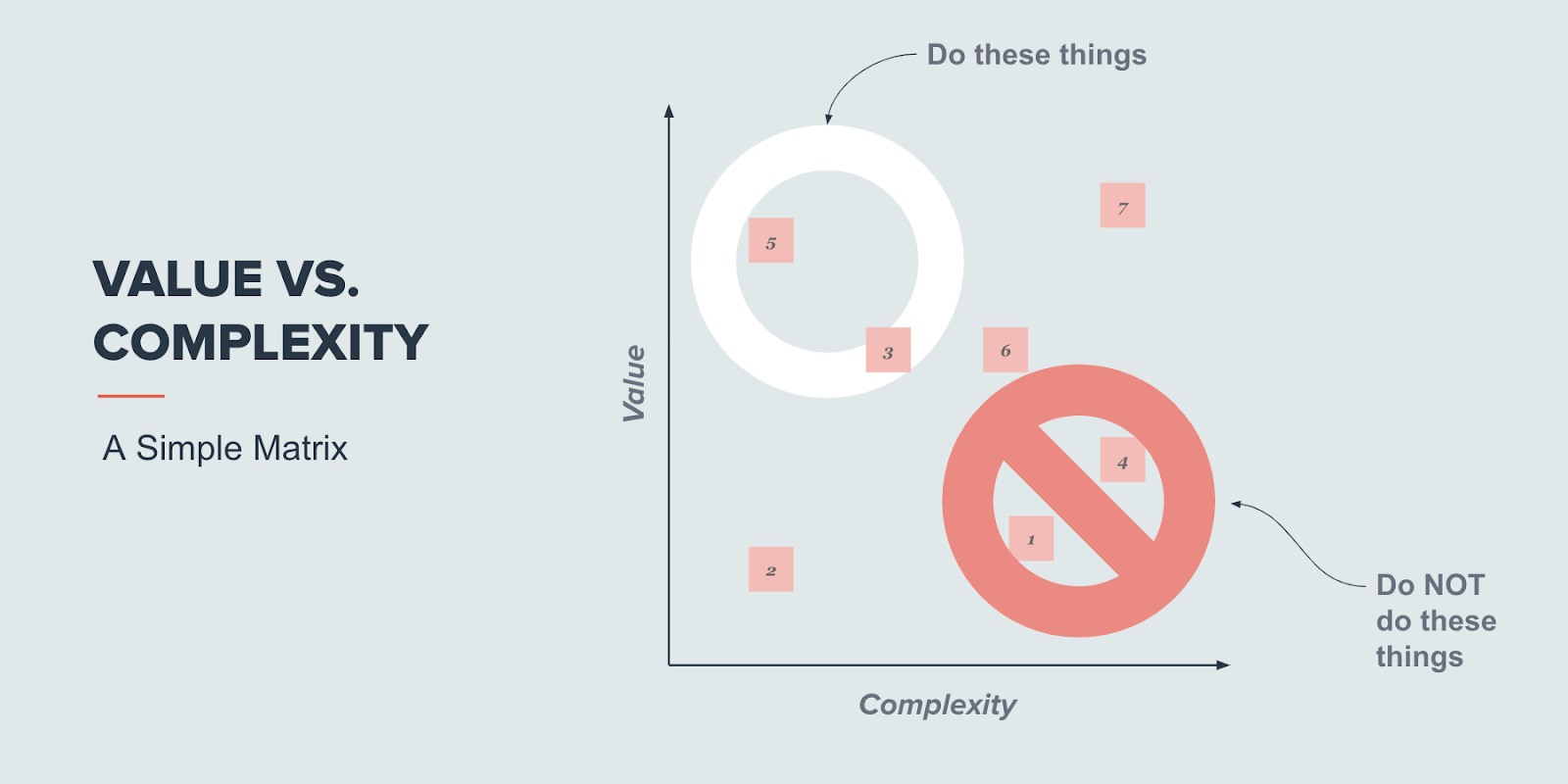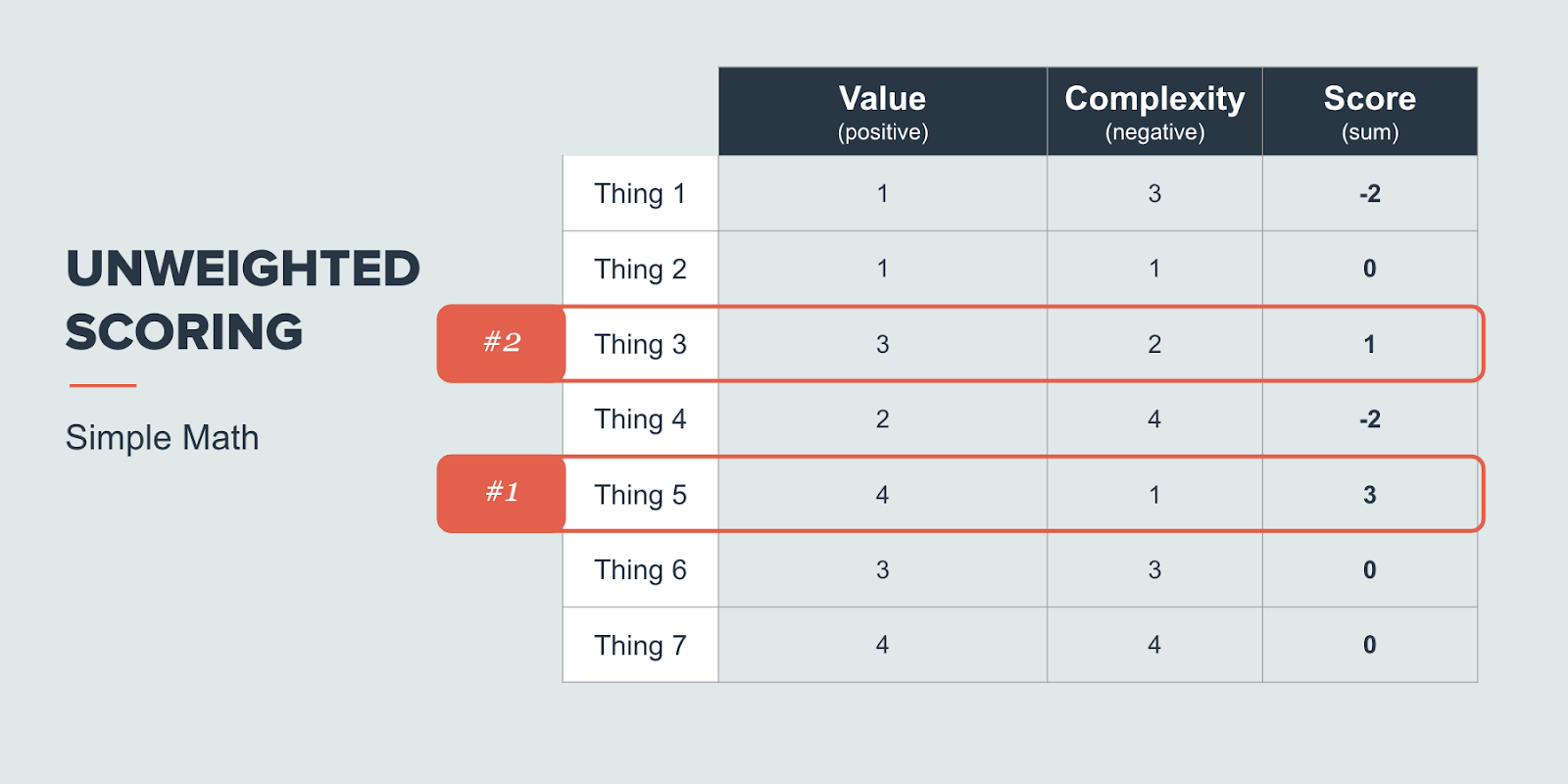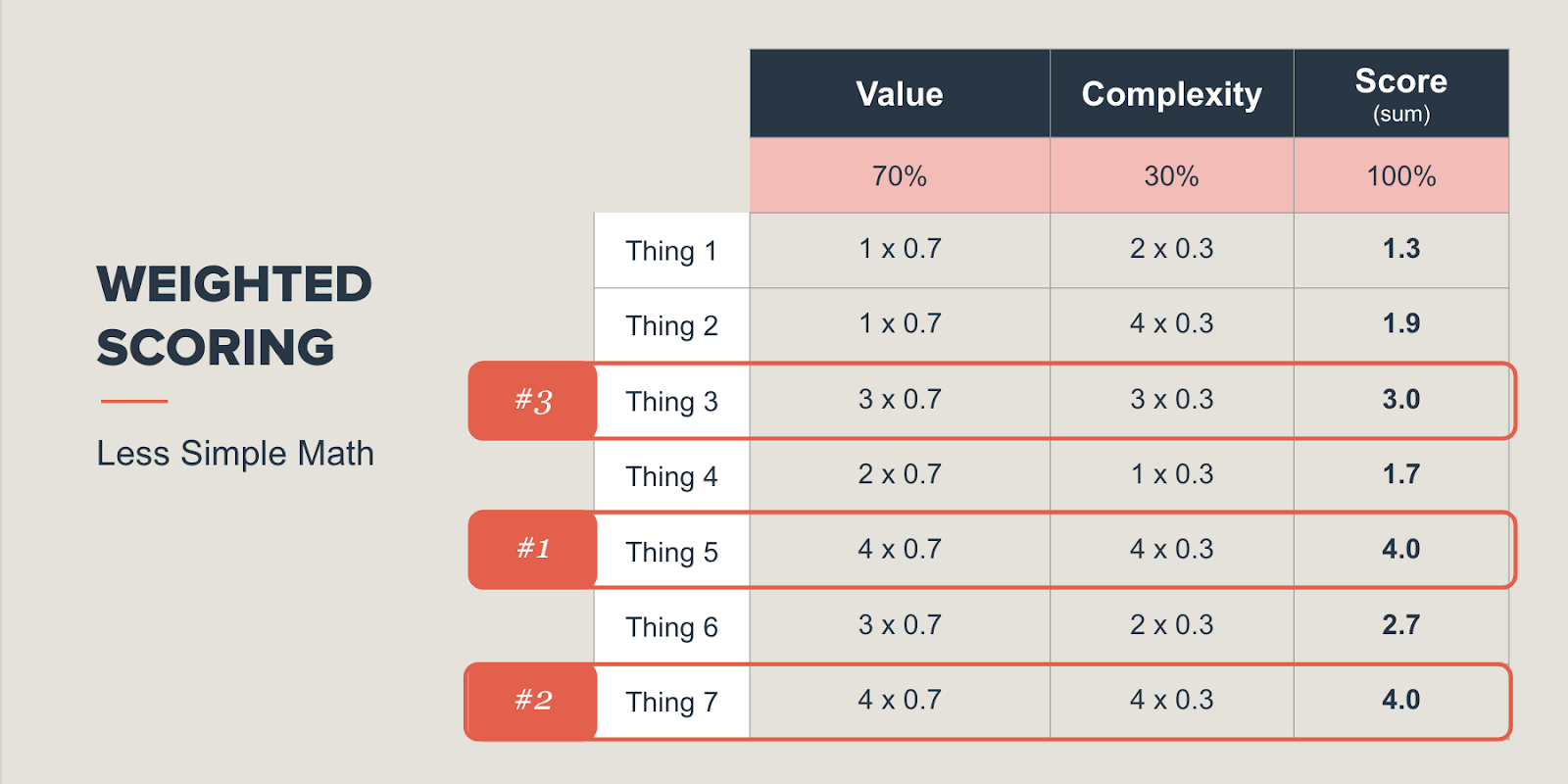Whether you’re an SEO specialist, a content manager, or knee-deep in PPC optimizations, you likely have a never-ending to-do list. In the crazy world that is digital marketing, there’s always a new skill to master or a “quick” optimization to carry out, and let’s be real: things can get overwhelming pretty quickly.
Having a high-level marketing strategy or a flexible budget isn’t always enough to ensure success. Why? Because it’s also critical to make sure you’re consistently evaluating, ranking, and prioritizing every potential marketing opportunity in the funnel to drive peak performance.
To help every marketer stay on track and effectively order tasks to exceed their core business goals and objectives, we’re sharing four tested, tried, and true prioritization techniques.
Why every marketer needs to prioritize their digital marketing efforts
If you’re reading this, we’re preaching to the choir: you clearly want to prioritize your to-do list. But by taking a step back to fully understand why prioritization matters, you can uncover the best methodology that fits your specific needs. There are three main reasons why prioritization in digital marketing is a must:
- Time: There are the same 24 hours in everyone’s day, but somehow, we never seem to have enough time to accomplish everything that we set out to do. We get distracted by the countless Slack messages and emails that our days quickly slip away from us before we can even tackle those to-do lists. By using a prioritization model, you can structure your days, weeks, months—and use your time more effectively. Time is often the driving force behind most prioritization models.
- Buy-In: Digital marketing initiatives cost money. Using a prioritization model can help you make the strongest business case to your boss, team, department, or client for the tactics that are worth the investment. Most prioritization models include numeric scores that allow you to objectively demonstrate marketing’s value to stakeholders, so they can quickly decide whether or not to give their sign-off.
- Alignment: If you don’t know what your marketing priorities are, how can anyone else? Using a prioritization model can help align employees across an organization. As you choose which variables you want to utilize in order to effectively prioritize tasks, you can align them to your organization’s overarching objective or goal. This can help ensure that what you’re doing is in complete alignment with where the company is going.
Popular prioritization models to maximize productivity and performance
Now you need to choose the best prioritization model for your needs. There are several prioritization models and techniques out there: some are as simple as an XY scatter plot and others that involve custom formulas and variables (but we’ll get into custom scripts in a bit). Here are four of the most popular models that digital marketers use today:
1. Value and Complexity (using an XY scatter plot)
This method is by far the simplest way to prioritize your tasks. You can simply take your to-do list, and plot each task on an XY axis, where complexity lies on the X-axis and value on the Y-axis. Top priority goes to the tasks that fall in the top left quadrant. These activities have high value and low complexity; they should provide the biggest impact for your business in the least amount of time. The tasks in the bottom right quadrant are low value and high complexity; they are going to take a prolonged amount of time to complete and won’t provide the most value in the long run. Those should be the lowest priority on your to-do list.

2. Unweighted Priority Scoring (using simple math)
The scatter plot model works well for prioritizing your own to-do list for a handful of tasks. But when you need to prioritize hundreds or thousands of tasks, it can get a bit overwhelming. This is when a scoring system can help you out. An unweighted priority score works in the same way as the value and complexity scatter plot, but uses addition (we told you it was simple math) to develop a final “score” that you can order from greatest to least, then tackle your list in that order.
Unweighted Score = Variable 1 + Variable 2 +…
You can calculate the final unweighted score of an activity by simply adding the (positive) value to the (negative) complexity. Just like what was shown in the XY scatter plot, Thing 5 and Thing 3 are shown to have the highest prioritization in the chart below:

3. Weighted Priority Scoring (using not-so-simple math)
Oftentimes, your variables are not going to be weighted equally. Perhaps you have the best engineering team in the world, and complexity isn’t that big of a deal. No matter how you define your specific variables, building on the additional weighted score can help you be more precise with your prioritization techniques, which is critical when you have thousands of things on your task list.
Weighted Score = (Variable 1 x Weight 1) + (Variable 2 x Weight 2)
For this methodology, we take the custom weights (70% for value and 30% for complexity) and multiply them to their respective columns. Then, to calculate the weighted score, we add those numbers together. This method closely resembles the weighted scoring system used in college courses, where a final exam may be weighted twice as heavily as a mid-term (because aren’t we all still recovering from the PTSD of college finals?).

4. RICE Priority Scoring (using a custom formula)
Developed by the super-smart minds of messaging software company Intercom, RICE Scoring has taken on a life of its own and is now used by product management and development teams across the globe. Teams often use RICE Scores to prioritize which tasks make it into their current sprints. Utilizing RICE Scores for technical SEO tasks allows you to speak the same language as the people who are going to be implementing your recommendations.

There are four elements of RICE Scoring:
- Reach: How many customers will this project impact over a single quarter? Is it a few hundred? Or thousands?
- Impact: How much will this project increase conversion rate when a customer encounters it?
- Confidence: How confident are we about the optimistic estimates for reach, impact, and effort?
- Effort: What is the estimated total amount of time a project will require from all members of your team—from the SEO manager to the engineer to the designer?
How to choose the right variables for effective prioritization
There are a number of custom, slightly more advanced prioritization scripts that utilize similar techniques and methodologies as the ones discussed above. At Wpromote, our SEO and content marketing services teams use a proprietary Impact IQ toolset that includes models for:
- Prioritizing which competitor gaps to fill on the SERP
- Figuring out which topics to write about for content marketers
- Deciding which keywords are the most important for a business
- Picking which technical SEO tasks should happen now, next, and later
The impact of these prioritization models depends on the variables and weights that are assigned to each task in the custom script. No matter which prioritization model you end up choosing, assigning the appropriate variables and weights is critical to success. While we used value and complexity as our assigned variables in the examples above, it’s important to know that there are countless other variables you should consider depending on your goals, your organization, and your specific tasks.
For SEO-specific prioritization, you may use many of the usual suspects found in keyword tools, such as current position, monthly search volume, or SERP features. But only by marrying these found opportunities with your actual business objectives can you be truly effective with your recommendations. These business objectives will vary by company but can include variables like product category, target persona, or even product margins.







Responses